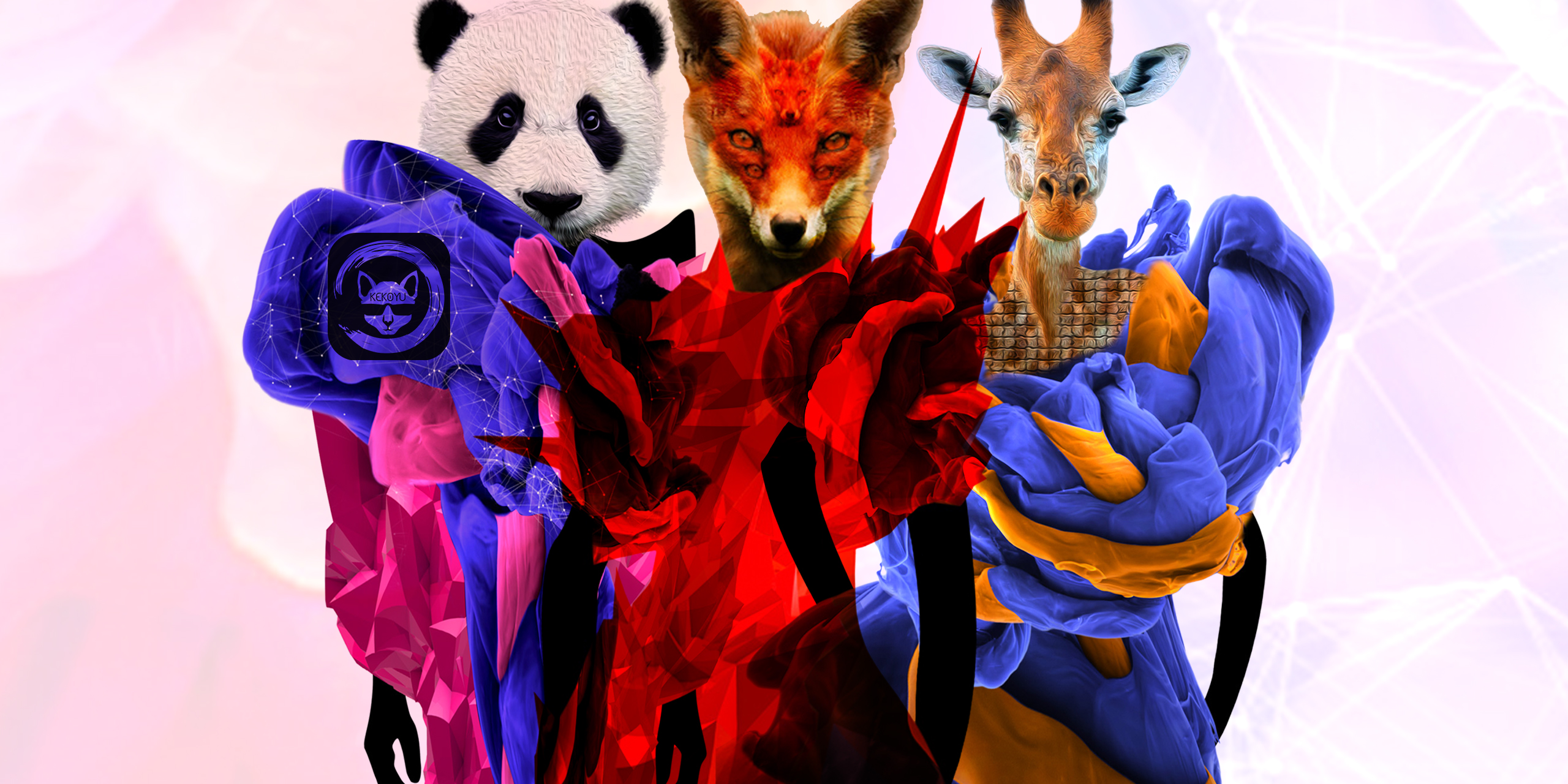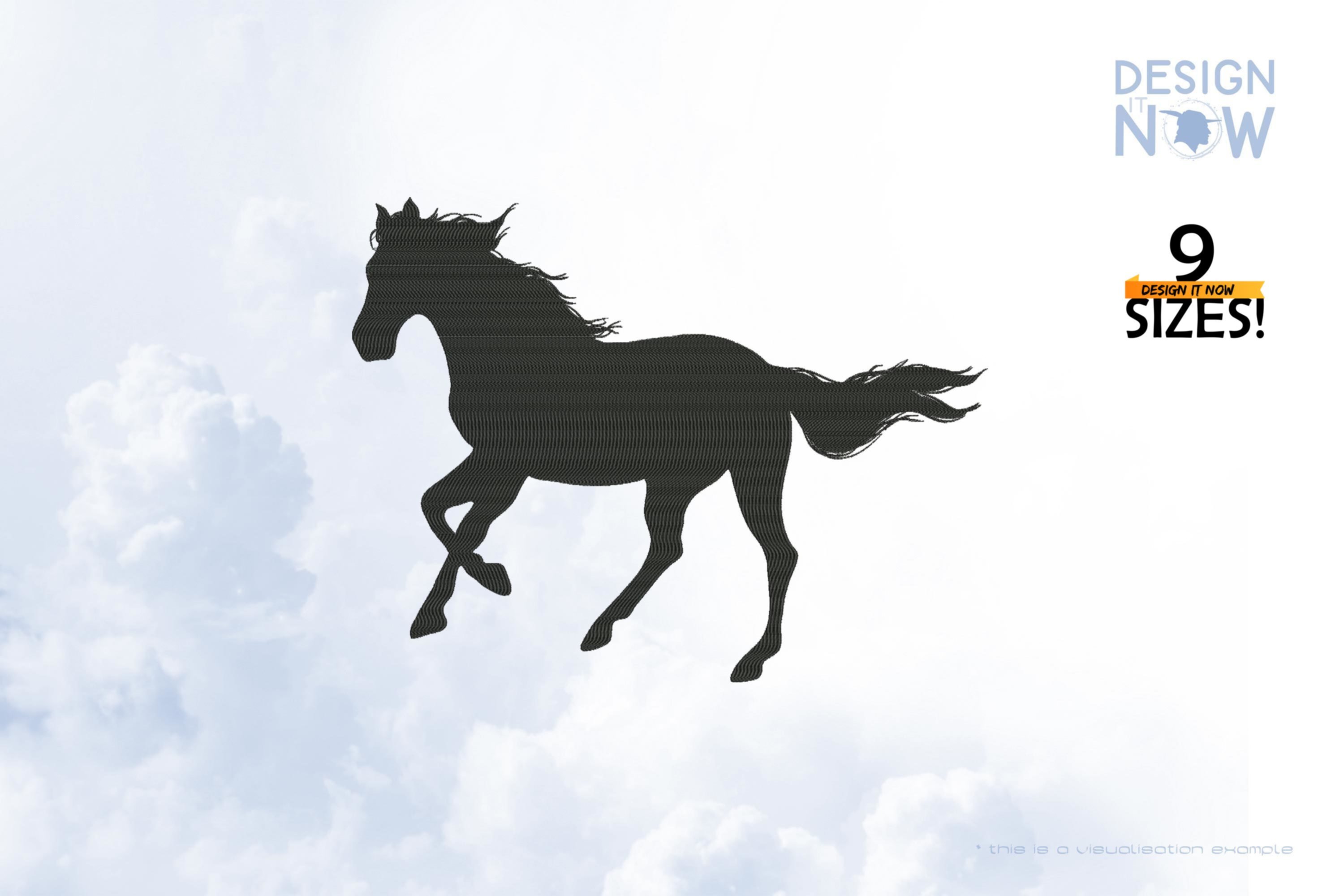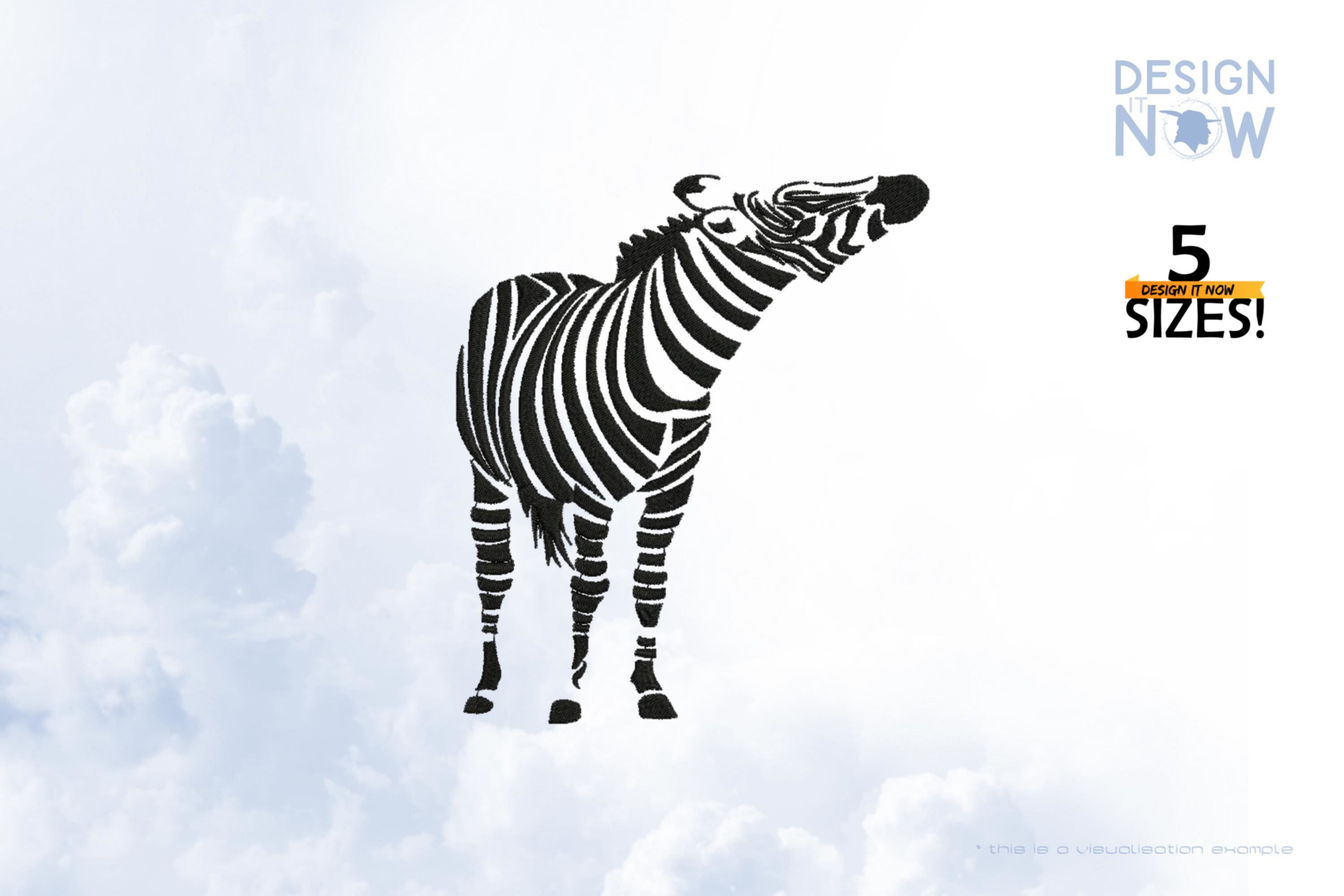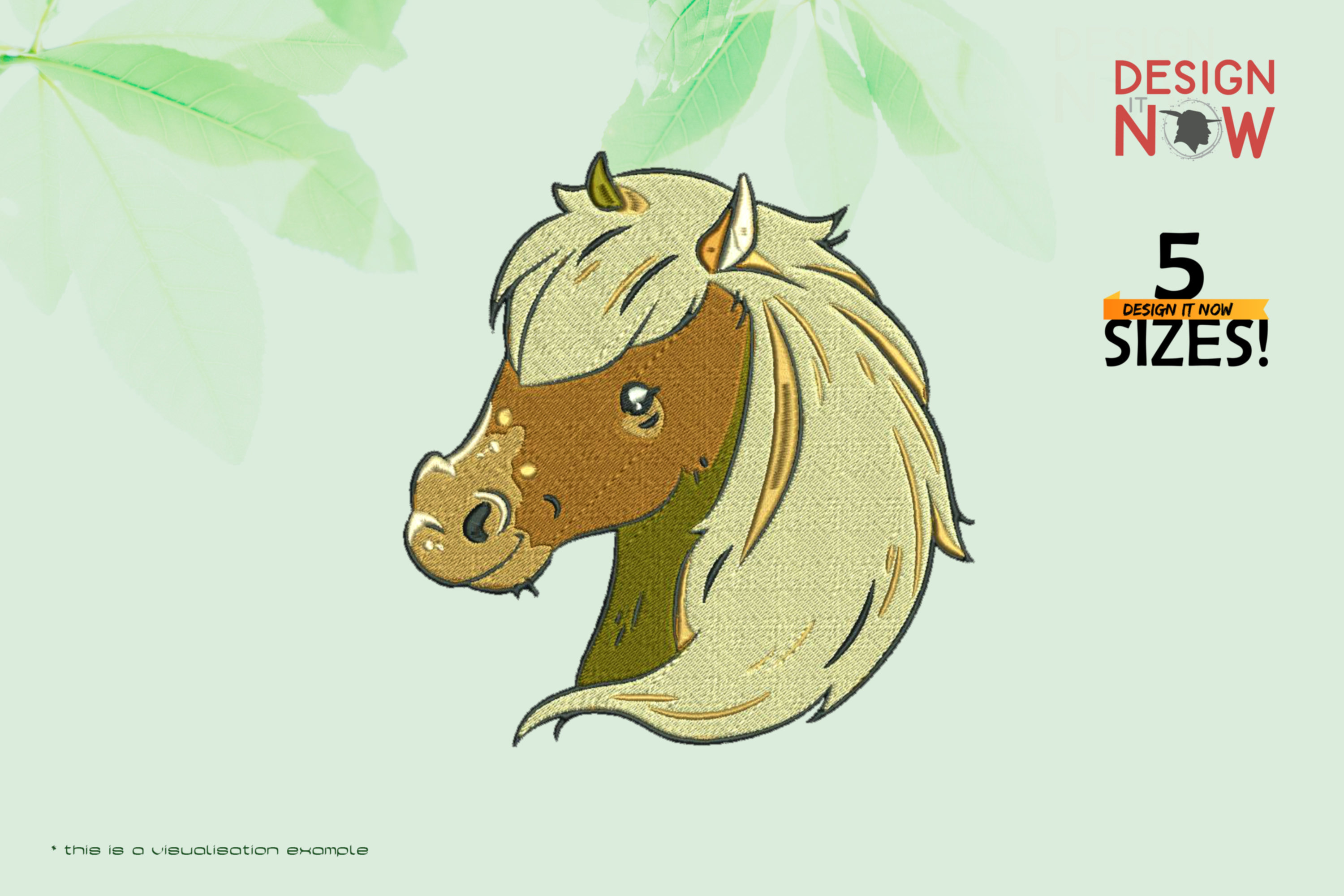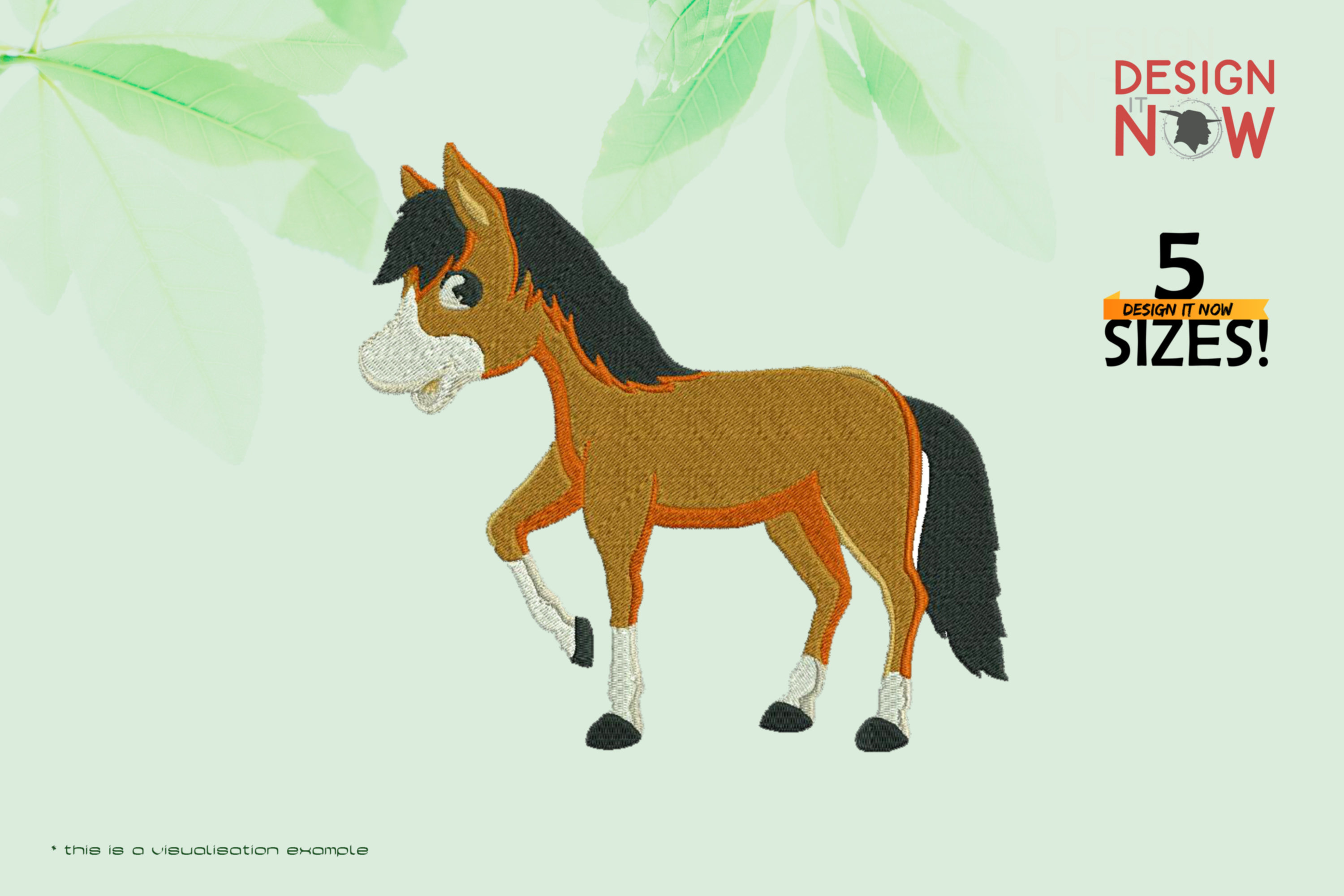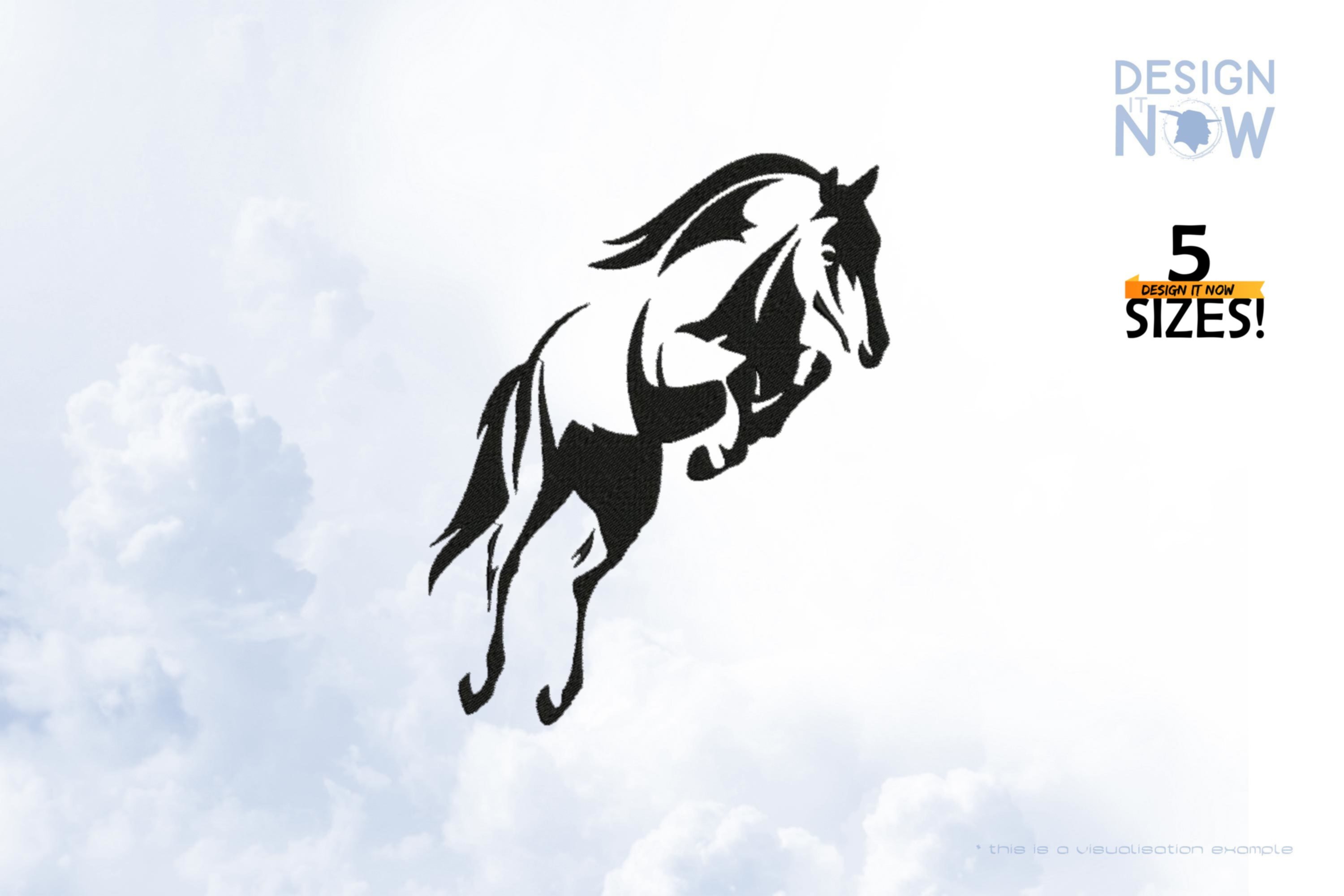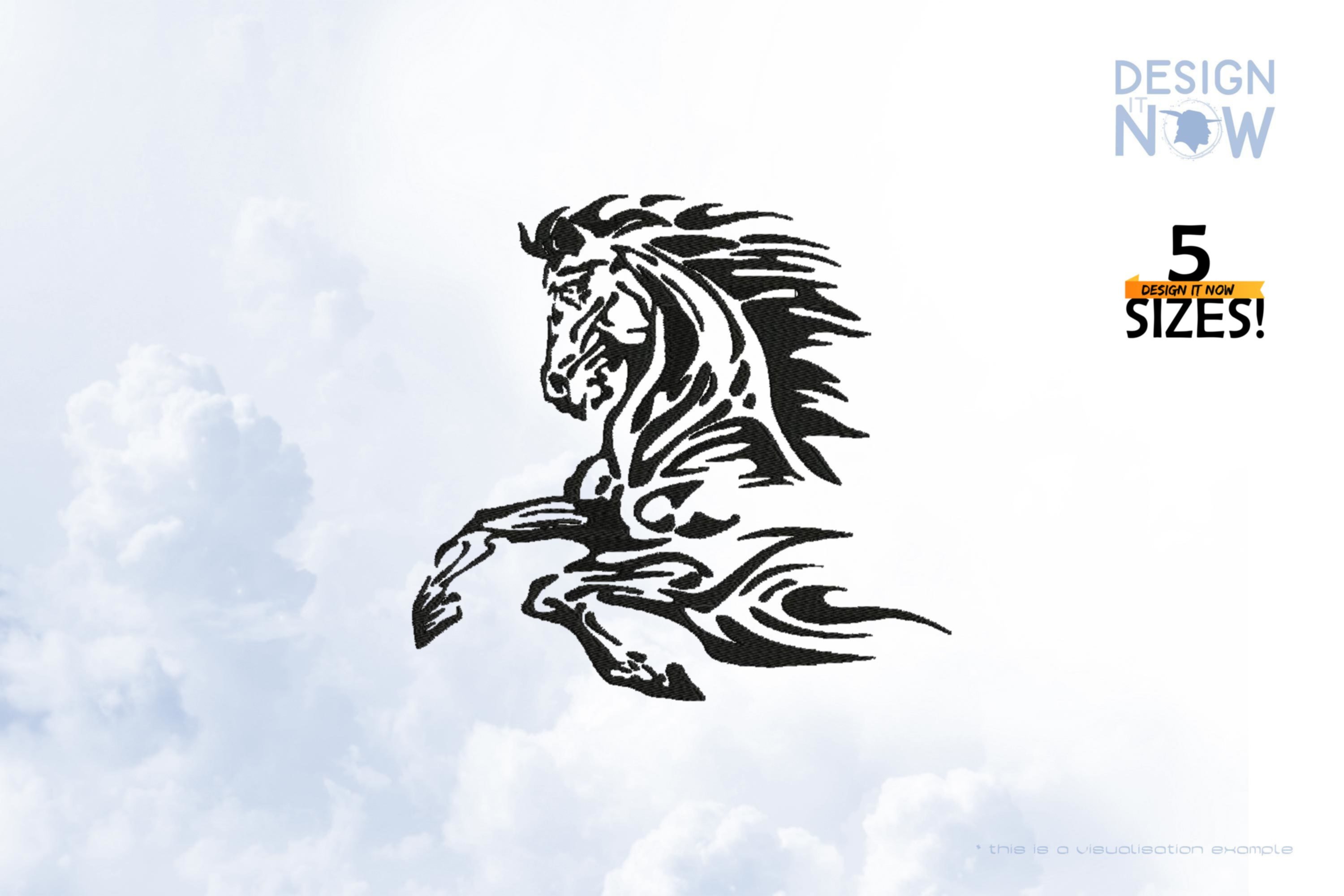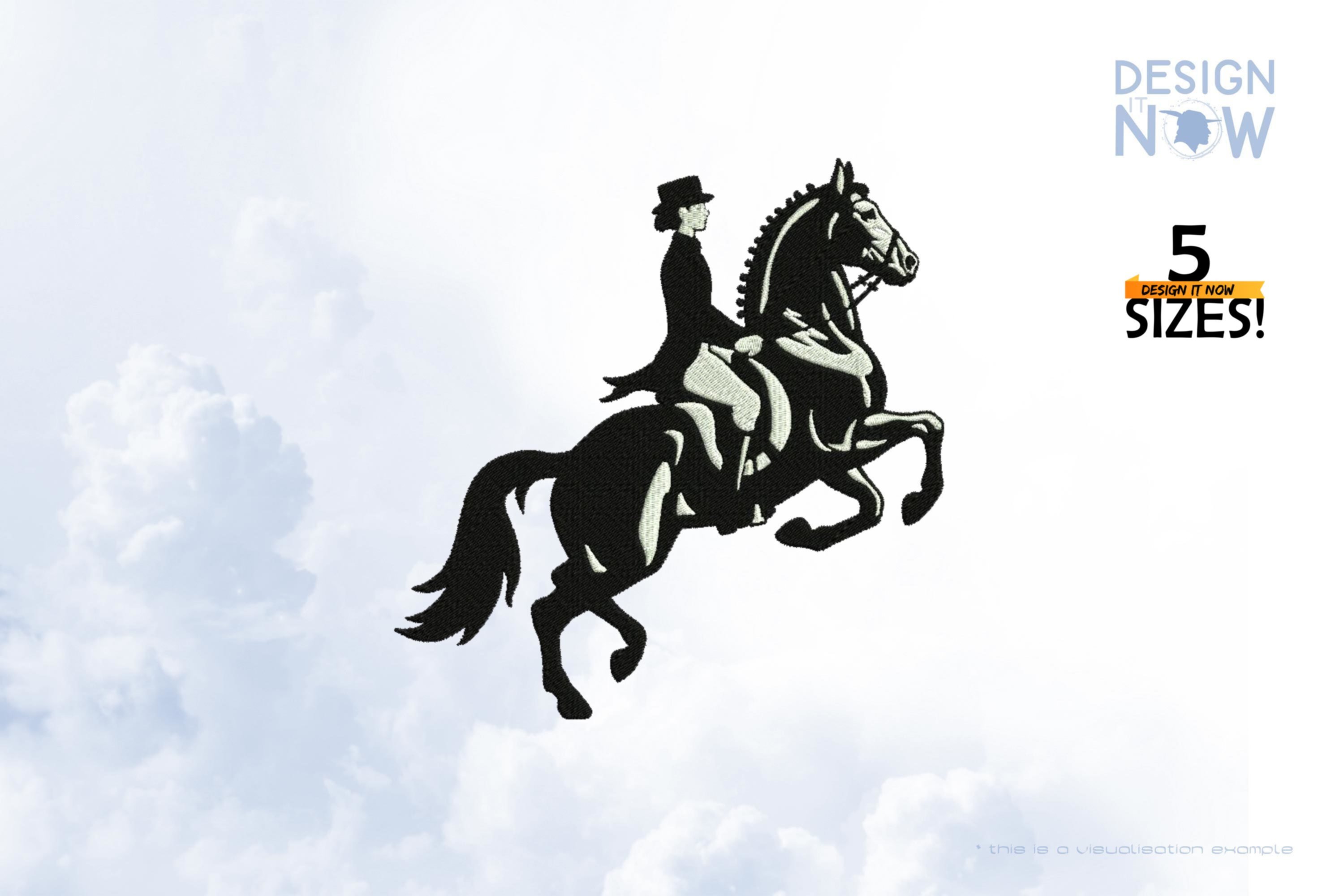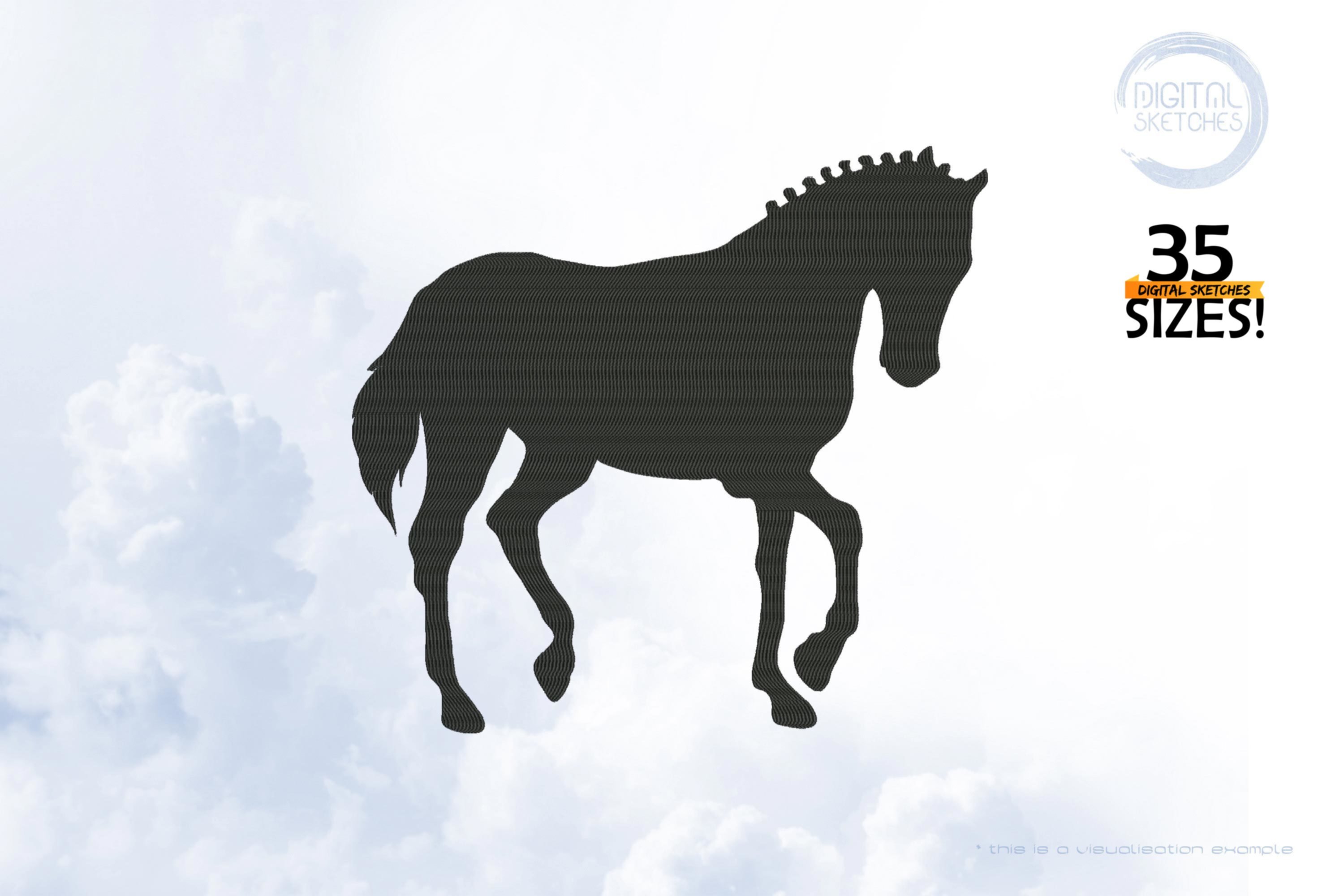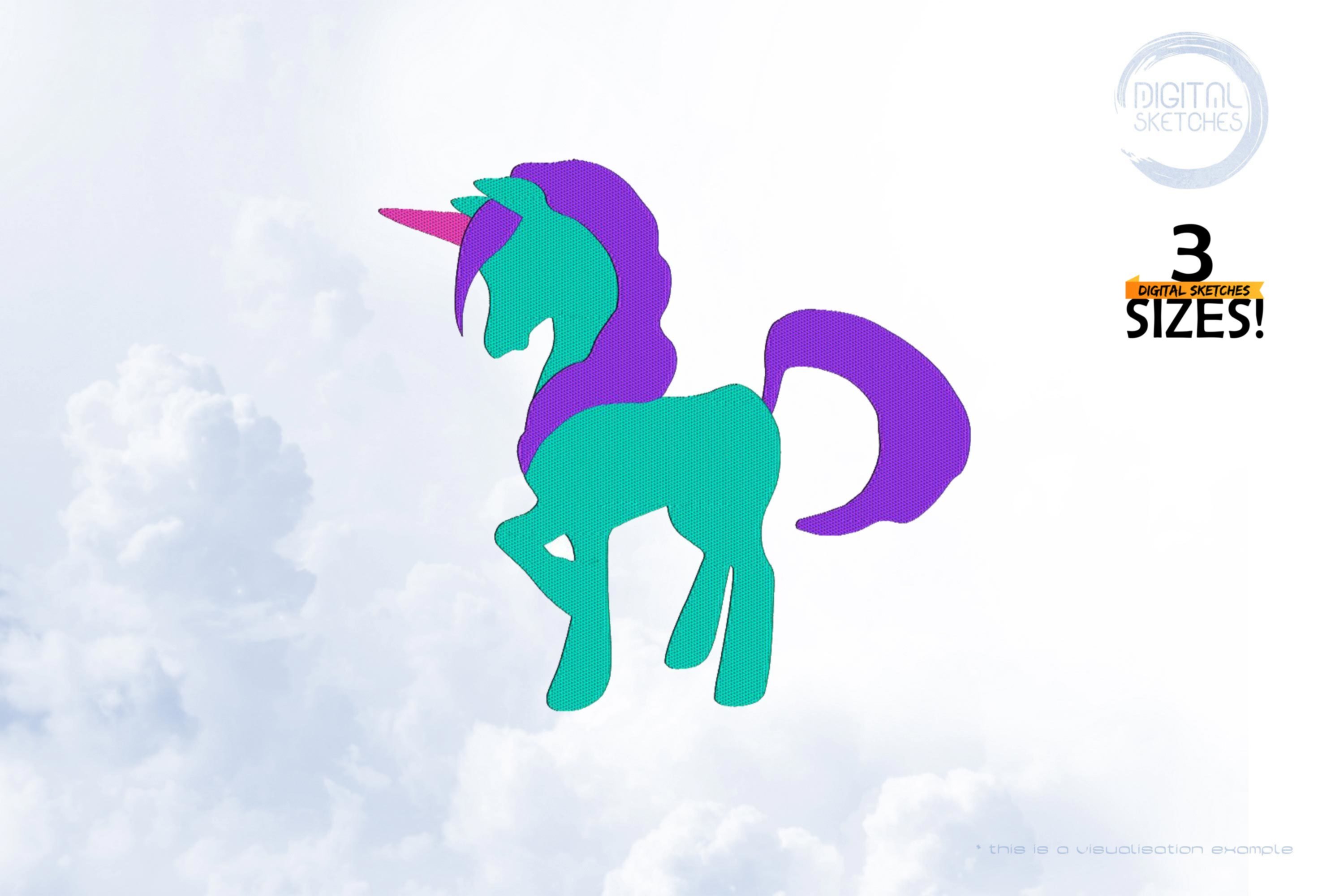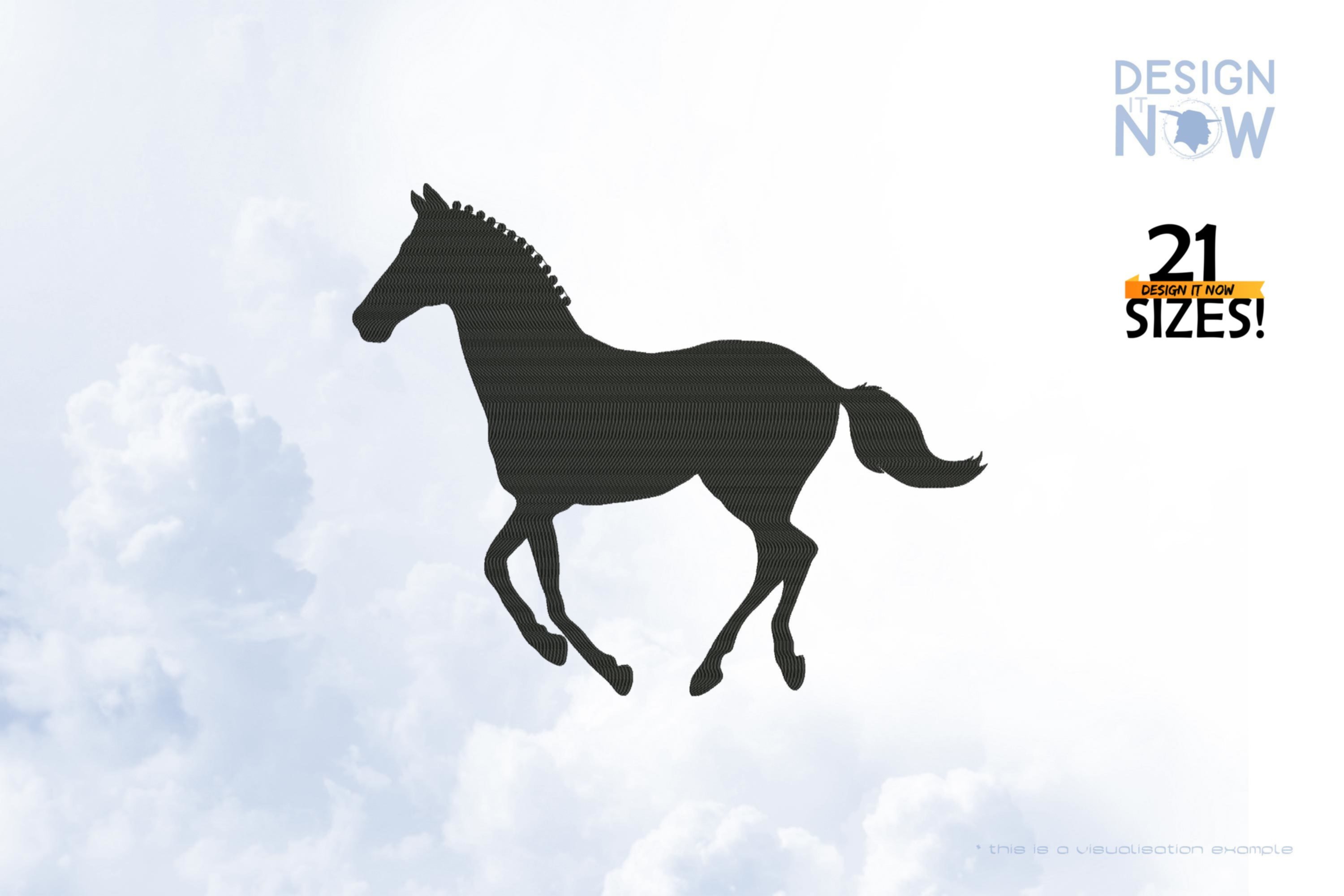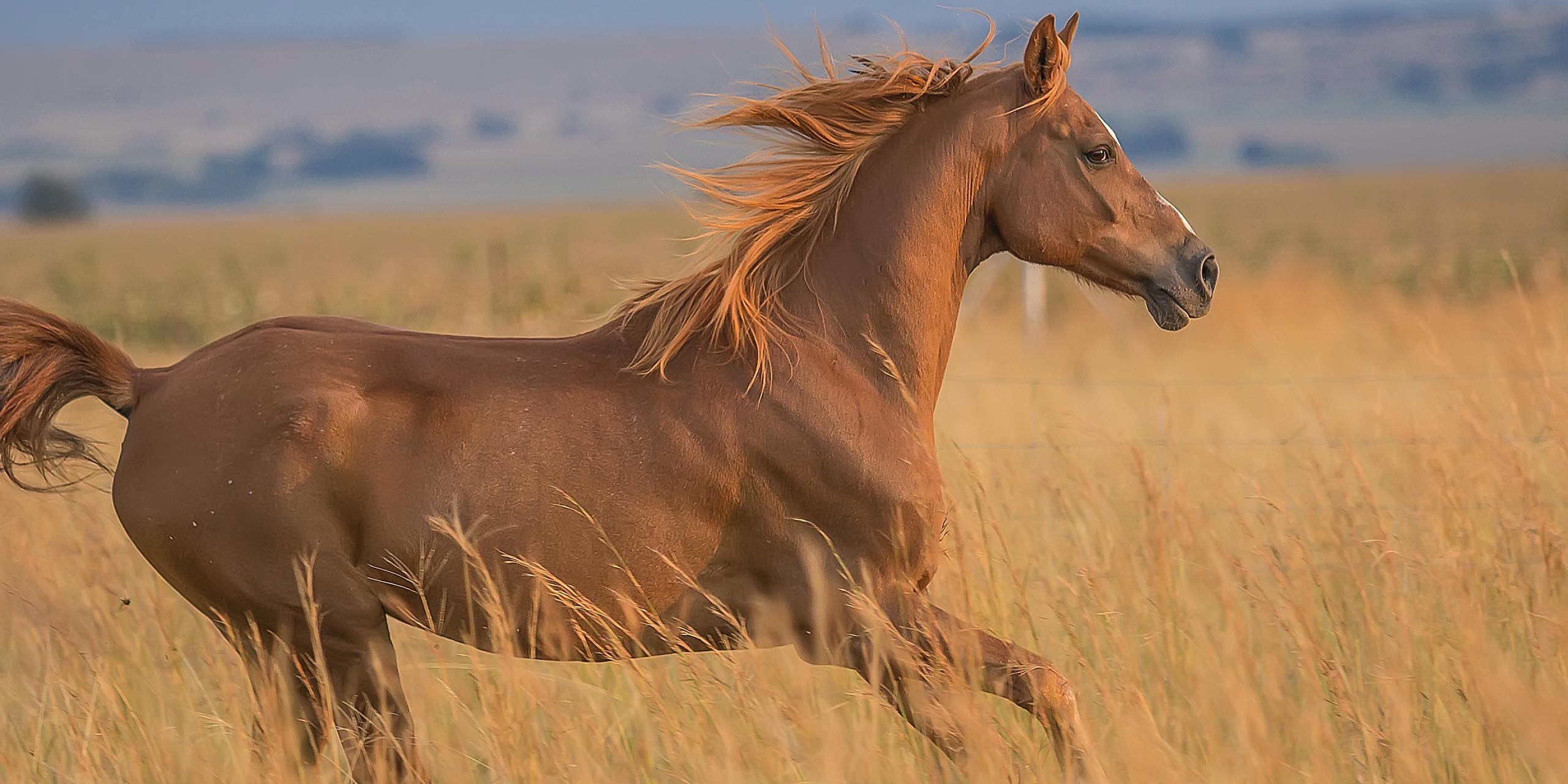
Horses
The domestic horse (Equus caballus) is a widespread domestic or farm animal that exists in numerous breeds throughout the world.
The domestic horse is the domesticated form of the wild horse, which, with the donkeys and zebras, forms the family of horses (equidae) within the order of odd-toed ungulates (Perissodactyla).
The appearance of the domestic horse varies in build, body size, coat and color. Depending on the purpose for which horses are bred, their types are divided into so-called cold-blooded, warm-blooded, thoroughbred, half-blooded and ponies. The designations cold-blooded, warm-blooded and thoroughbred are not based on the warmth or even quantity of the horse's blood, but rather designate the predominant temperament of the respective horse type. For example, cold-blooded horses generally tend to react calmly and with little jumpiness, while Thoroughbreds are considered more nervous and easily excited.
Horses are toe-walkers, walking on the third, middle toe alone. The remaining toes are receded and preserved on the skeleton of the foreleg as rudimentary grip legs. Because the eyes are located on the side of the head, horses can see almost all around (350°), but have poor spatial vision. However, they do not notice what is exactly in front of their nose or behind them until they turn their head. Horses are not color blind, but they cannot distinguish all colors. Horses can't tell brown, green and gray apart - but they see colors like white, red, yellow and blue very well. Horses see better in the dark than humans, but take longer to adjust to rapid changes in light and dark.
The horse's hearing is very fine. Each auricle can be rotated 180°, which enables the horse to adjust its ears so that it can hear specifically in all directions.
- Machine Embroidery Designs
- Bags
- Printables
- Graphics
- Thread Color Mapping
- How-To's
Filter
–
%
Horse
The horses (Equus) are the only recent genus of the family Equidae. The genus includes the wild horses (the Przewalski's horse and the now extinct tarpan), the various wild ass forms (the African and Asian asses and the kiang, respectively), and at least three zebra species (the steppe, mountain, and Grevy's zebra). It also includes domestic forms domesticated from wild animals. The number of species and their delimitation from each other are still disputed. A total of seven or eight species are often distinguished, the majority of which are endangered. The animals live today in sub-Saharan Africa and in southern and central and eastern Asia. The inhabited habitats consist of open, often grassy landscapes, which can sometimes be very dry to desert-like. Horses are adapted to these regions by their strong build and long, slender limbs. The legs are also where the distinguishing characteristic of the species is found, as both the front and hind feet each have only one toe, which is covered by a broad hoof. The reduction in the number of toes, which also earned the horses the higher-ranking designation of "solipeds," enables them to move quickly and with little friction in the steppe and savannah regions. In general, horses are sociable animals. The main food of the animals consists of grasses, occasionally they also eat leaves and twigs. To chew the hard grass food, horses developed molars with extremely high tooth crowns, which is considered another typical characteristic of the species. The less efficient gastrointestinal tract compared to other ungulates causes the horses to spend most of their active time eating.Product Number: N09846Product Name: HorseIIIThis design comes with the following sizes:Size: 8.18"(w) X 6.24"(h) (207.8mm X 158.6mm) Size: 8.54"(w) X 6.50"(h) (216.8mm X 165.2mm) Size: 8.61"(w) X 6.57"(h) (218.8mm X 166.8mm) Size: 8.65"(w) X 6.60"(h) (219.8mm X 167.6mm) Size: 8.77"(w) X 6.69"(h) (222.8mm X 170.0mm) Size: 9.20"(w) X 7.02"(h) (233.8mm X 178.2mm) Size: 9.40"(w) X 7.17"(h) (238.8mm X 182.0mm) Size: 9.44"(w) X 7.20"(h) (239.8mm X 183.0mm) Size: 13.77"(w) X 10.51"(h) (349.8mm X 267.0mm)The following formats are included in the file you will receive: .DST .EXP .JEF .PES .VP3 .XXX .PEC .U01You MUST have an embroidery machine and the software needed to transfer it from your computer to the machine to use this file. This listing is for the machine file only - not a finished item.Running Horse Silhouette Machine Embroidery Design, Wild Animals Embroidery Pattern, Horses Designs, Embroidery Art, DIY Project Idea, Unique Digital Supplies For Embroidery Machines
US$1.10* US$4.40* (75% saved)
%
Donkey
The domestic donkey is a common pet all over the world. Donkeys are pony-sized members of the horse family with very long ears, a standing mane and a tail with an end tassel. The coat colour is grey or brown to black, sometimes reddish. There are also pied donkeys. Pure white donkeys are very rare. There is usually an eel line across the back, a cross line (shoulder cross) across the shoulders and the legs are often zebra-striped. The belly is white, as is the area around the mouth and the eyes.Unlike the domestic horse, the donkey's hooves are adapted to a dry surface. The hoof wall of the donkey's hooves can absorb more water than those of horses and is more resistant to abrasion. This is an advantage in dry environments, but a disadvantage in humid climates. Donkeys therefore need a husbandry adapted to this, which enables them to avoid wetness.Donkeys have a shoulder height of 90 to 160 cm, depending on the breed, and are sexually mature at 2 to 2 ½ years of age. In principle, mating is possible all year round, but usually takes place in spring. After a gestation period of 12 to 14 months, one young is usually born, sometimes two. It takes about six to nine months until they become independent. Product Number: N07917Product Name: DonkeyThis design comes with the following sizes:Size: 5.44"(w) X 8.14"(h) (138.2mm X 206.8mm) Size: 6.05"(w) X 9.05"(h) (153.6mm X 229.8mm)The following formats are included in the file you will receive: .DST .EXP .JEF .PES .VP3 .XXX .PEC .U01You MUST have an embroidery machine and the software needed to transfer it from your computer to the machine to use this file. This listing is for the machine file only - not a finished item.Children Cute Donkey Machine Embroidery Design, Pet Embroidery Pattern, Horse Family Animals Embroidery Art, Donkey DIY Project Idea, Original Digital Supplies For Embroidery Machines, Artsupplies For Handmade Embroidery Projects, Quality Embroidery Digitizing
US$1.10* US$4.40* (75% saved)
%
Zebra Wild Horse
Zebras (Hippotigris) are a subgenus of the horse genus. In it the three species Grevy's zebra, mountain zebra and steppe zebra are merged. The animals are especially characterized by their black and white stripe pattern. All representatives of the zebras occur exclusively in Africa, where they mostly inhabit open landscapes. Zebras reach a head-torso length of 210 to 300 centimeters, the tail becomes 40 to 60 centimeters long and the shoulder height is 110 to 160 centimeters. Weight varies from 180 to 450 kilograms. The Grevy's zebra is the largest zebra and the largest wild horse species. Product Number: N03719Product Name: ZebraThis design comes with the following sizes:Size: 3.37"(w) X 3.91"(h) (85.5 X 99.2mm) 'Size: 4.08"(w) X 4.73"(h) (103.6 X 120.2mm) Size: 4.76"(w) X 5.52"(h) (120.8 X 140.2mm) Size: 5.77"(w) X 6.70"(h) (146.6 X 170.2mm) Size: 6.75"(w) X 7.84"(h) (171.5 X 199.2mm)The following formats are included in the file you will receive: .DST .EXP .JEF .PES .VP3 .XXX .VIP .HUSYou MUST have an embroidery machine and the software needed to transfer it from your computer to the machine to use this file. This listing is for the machine file only - not a finished item.Beautiful Zebra Wild Horse Machine Embroidery Design, Embroidery Pattern, Embroidery Art, DIY Project Idea, Original Digital Supplies For Embroidery Machines, Artsupplies For Handmade Embroidery Projects, Quality Embroidery Digitizing
US$1.10* US$4.40* (75% saved)
%
Cute Pony Horse Head
The horses (Equus) are the only recent genus of the family Equidae. The genus includes the wild horses (the Przewalski's horse and the now extinct tarpan), the various wild ass forms (the African and Asian asses and the kiang, respectively), and at least three zebra species (the steppe, mountain, and Grevy's zebra). It also includes domestic forms domesticated from wild animals. The number of species and their delimitation from each other are still disputed. A total of seven or eight species are often distinguished, the majority of which are endangered. The animals live today in sub-Saharan Africa and in southern and central and eastern Asia. The inhabited habitats consist of open, often grassy landscapes, which can sometimes be very dry to desert-like. Horses are adapted to these regions by their strong build and long, slender limbs. The legs are also where the distinguishing characteristic of the species is found, as both the front and hind feet each have only one toe, which is covered by a broad hoof. The reduction in the number of toes, which also earned the horses the higher-ranking designation of "solipeds," enables them to move quickly and with little friction in the steppe and savannah regions. In general, horses are sociable animals. The main food of the animals consists of grasses, occasionally they also eat leaves and twigs. To chew the hard grass food, horses developed molars with extremely high tooth crowns, which is considered another typical characteristic of the species. The less efficient gastrointestinal tract compared to other ungulates causes the horses to spend most of their active time eating.Product Number: N03720Product Name: PonyThis design comes with the following sizes:Size: 3.74"(w) X 3.91"(h) (95.1 X 99.2mm) Size: 4.54"(w) X 4.73"(h) (115.2 X 120.2mm) Size: 5.29"(w) X 5.52"(h) (134.4 X 140.2mm) Size: 6.42"(w) X 6.70"(h) (163.0 X 170.2mm) Size: 7.51"(w) X 7.84"(h) (190.8 X 199.2mm) The following formats are included in the file you will receive: .DST .EXP .JEF .PES .VP3 .XXX .VIP .HUSYou MUST have an embroidery machine and the software needed to transfer it from your computer to the machine to use this file. This listing is for the machine file only - not a finished item.Cute Children Pony Horse Machine Embroidery Design, Wild Animals Embroidery Pattern, Horses Designs, Embroidery Art, DIY Project Idea, Unique Digital Supplies For Embroidery Machines
US$1.10* US$4.40* (75% saved)
%
Cute Pony Horse
The horses (Equus) are the only recent genus of the family Equidae. The genus includes the wild horses (the Przewalski's horse and the now extinct tarpan), the various wild ass forms (the African and Asian asses and the kiang, respectively), and at least three zebra species (the steppe, mountain, and Grevy's zebra). It also includes domestic forms domesticated from wild animals. The number of species and their delimitation from each other are still disputed. A total of seven or eight species are often distinguished, the majority of which are endangered. The animals live today in sub-Saharan Africa and in southern and central and eastern Asia. The inhabited habitats consist of open, often grassy landscapes, which can sometimes be very dry to desert-like. Horses are adapted to these regions by their strong build and long, slender limbs. The legs are also where the distinguishing characteristic of the species is found, as both the front and hind feet each have only one toe, which is covered by a broad hoof. The reduction in the number of toes, which also earned the horses the higher-ranking designation of "solipeds," enables them to move quickly and with little friction in the steppe and savannah regions. In general, horses are sociable animals. The main food of the animals consists of grasses, occasionally they also eat leaves and twigs. To chew the hard grass food, horses developed molars with extremely high tooth crowns, which is considered another typical characteristic of the species. The less efficient gastrointestinal tract compared to other ungulates causes the horses to spend most of their active time eating.Product Number: N03722Product Name: horse This design comes with the following sizes:Size: 3.91"(w) X 3.66"(h) (99.3 X 93.0mm) Size: 4.74"(w) X 4.43"(h) (120.3 X 112.6mm) Size: 5.52"(w) X 5.17"(h) (140.3 X 131.3mm) Size: 6.70"(w) X 6.28"(h) (170.3 X 159.4mm) Size: 7.88"(w) X 7.38"(h) (200.2 X 187.5mm) The following formats are included in the file you will receive: .DST .EXP .JEF .PES .VP3 .XXX .VIP .HUSYou MUST have an embroidery machine and the software needed to transfer it from your computer to the machine to use this file. This listing is for the machine file only - not a finished item.Cute Children Pony Horse Machine Embroidery Design, Wild Animals Embroidery Pattern, Horses Designs, Embroidery Art, DIY Project Idea, Unique Digital Supplies For Embroidery Machines
US$1.10* US$4.40* (75% saved)
%
Jumping Horse
The horses (Equus) are the only recent genus of the family Equidae. The genus includes the wild horses (the Przewalski's horse and the now extinct tarpan), the various wild ass forms (the African and Asian asses and the kiang, respectively), and at least three zebra species (the steppe, mountain, and Grevy's zebra). It also includes domestic forms domesticated from wild animals. The number of species and their delimitation from each other are still disputed. A total of seven or eight species are often distinguished, the majority of which are endangered. The animals live today in sub-Saharan Africa and in southern and central and eastern Asia. The inhabited habitats consist of open, often grassy landscapes, which can sometimes be very dry to desert-like. Horses are adapted to these regions by their strong build and long, slender limbs. The legs are also where the distinguishing characteristic of the species is found, as both the front and hind feet each have only one toe, which is covered by a broad hoof. The reduction in the number of toes, which also earned the horses the higher-ranking designation of "solipeds," enables them to move quickly and with little friction in the steppe and savannah regions. In general, horses are sociable animals. The main food of the animals consists of grasses, occasionally they also eat leaves and twigs. To chew the hard grass food, horses developed molars with extremely high tooth crowns, which is considered another typical characteristic of the species. The less efficient gastrointestinal tract compared to other ungulates causes the horses to spend most of their active time eating.Product Number: N03721Product Name: Horse This design comes with the following sizes:Size: 3.15"(w) X 3.91"(h) (79.9 X 99.3mm) Size: 3.81"(w) X 4.74"(h) (96.9 X 120.3mm) Size: 4.45"(w) X 5.52"(h) (113.1 X 140.3mm) Size: 5.40"(w) X 6.70"(h) (137.2 X 170.2mm)Size: 6.35"(w) X 7.88"(h) (161.3 X 200.2mm) The following formats are included in the file you will receive: .DST .EXP .JEF .PES .VP3 .XXX .VIP .HUSYou MUST have an embroidery machine and the software needed to transfer it from your computer to the machine to use this file. This listing is for the machine file only - not a finished item.Jumping Horse Machine Embroidery Design, Wild Animals Embroidery Pattern, Horses Designs, Embroidery Art, DIY Project Idea, Unique Digital Supplies For Embroidery Machines
US$1.10* US$4.40* (75% saved)
%
Running Horse
The horses (Equus) are the only recent genus of the family Equidae. The genus includes the wild horses (the Przewalski's horse and the now extinct tarpan), the various wild ass forms (the African and Asian asses and the kiang, respectively), and at least three zebra species (the steppe, mountain, and Grevy's zebra). It also includes domestic forms domesticated from wild animals. The number of species and their delimitation from each other are still disputed. A total of seven or eight species are often distinguished, the majority of which are endangered. The animals live today in sub-Saharan Africa and in southern and central and eastern Asia. The inhabited habitats consist of open, often grassy landscapes, which can sometimes be very dry to desert-like. Horses are adapted to these regions by their strong build and long, slender limbs. The legs are also where the distinguishing characteristic of the species is found, as both the front and hind feet each have only one toe, which is covered by a broad hoof. The reduction in the number of toes, which also earned the horses the higher-ranking designation of "solipeds," enables them to move quickly and with little friction in the steppe and savannah regions. In general, horses are sociable animals. The main food of the animals consists of grasses, occasionally they also eat leaves and twigs. To chew the hard grass food, horses developed molars with extremely high tooth crowns, which is considered another typical characteristic of the species. The less efficient gastrointestinal tract compared to other ungulates causes the horses to spend most of their active time eating.Product Number: N03651Product Name: HorseThis design comes with the following sizes:Size: 3.87"(w) X 3.63"(h) (98.4 X 92.2mm) Size: 4.33"(w) X 4.65"(h) (110.0 X 118.0mm) Size: 5.07"(w) X 5.42"(h) (128.7 X 137.7mm) Size: 6.17"(w) X 6.58"(h) (156.8 X 167.2mm) Size: 7.26"(w) X 7.72"(h) (184.3 X 196.2mm)The following formats are included in the file you will receive: .DST .EXP .JEF .PES .VP3 .XXX .VIP .HUSYou MUST have an embroidery machine and the software needed to transfer it from your computer to the machine to use this file. This listing is for the machine file only - not a finished item.Running Horse Machine Embroidery Design, Wild Animals Embroidery Pattern, Horses Designs, Embroidery Art, DIY Project Idea, Unique Digital Supplies For Embroidery Machines
US$1.10* US$4.40* (75% saved)
%
Dressage Horse Riding
Dressage is a form of horse riding performed in exhibitions and competitions. It is an equestrian sport defined by the International Equestrian Federation in which the horse and rider are expected to perform a series of predetermined movements from memory. Dressage tests are the formalised sequence of a series of dressage movements used in competition. Although horses and riders compete against each other, the tests are performed by a horse and rider combination and horses and riders are judged against a common standard rather than their performance compared to other competitors. The aim of dressage riding is to strengthen and loosen the horse while maintaining a connection with the rider. An English saddle is required for dressage, specifically a "dressage saddle" modelled exclusively for the discipline.Product Number: N03684Product Name: DressageThis design comes with the following sizes:Size: 3.85"(w) X 3.94"(h) (97.9 X 100.1mm) Size: 4.63"(w) X 4.72"(h) (117.6 X 120.0mm) Size: 5.40"(w) X 5.51"(h) (137.1 X 140.0mm) Size: 6.56"(w) X 6.70"(h) (166.5 X 170.1mm) Size: 7.67"(w) X 7.83"(h) (194.9 X 199.0mm)The following formats are included in the file you will receive: .DST .EXP .JEF .PES .VP3 .XXX .VIP .HUSYou MUST have an embroidery machine and the software needed to transfer it from your computer to the machine to use this file. This listing is for the machine file only - not a finished item.Dressage Horse Riding Machine Embroidery Design, Horse Exhibitions Competitions Embroidery Pattern, Equestrian Sport Embroidery Art, DIY Project Ideas, Beautiful Digital Supplies For Embroidery Machines
US$1.10* US$4.40* (75% saved)
%
Horse IX
The horses (Equus) are the only recent genus of the family Equidae. The genus includes the wild horses (the Przewalski's horse and the now extinct tarpan), the various wild ass forms (the African and Asian asses and the kiang, respectively), and at least three zebra species (the steppe, mountain, and Grevy's zebra). It also includes domestic forms domesticated from wild animals. The number of species and their delimitation from each other are still disputed. A total of seven or eight species are often distinguished, the majority of which are endangered. The animals live today in sub-Saharan Africa and in southern and central and eastern Asia. The inhabited habitats consist of open, often grassy landscapes, which can sometimes be very dry to desert-like. Horses are adapted to these regions by their strong build and long, slender limbs. The legs are also where the distinguishing characteristic of the species is found, as both the front and hind feet each have only one toe, which is covered by a broad hoof. The reduction in the number of toes, which also earned the horses the higher-ranking designation of "solipeds," enables them to move quickly and with little friction in the steppe and savannah regions. In general, horses are sociable animals. The main food of the animals consists of grasses, occasionally they also eat leaves and twigs. To chew the hard grass food, horses developed molars with extremely high tooth crowns, which is considered another typical characteristic of the species. The less efficient gastrointestinal tract compared to other ungulates causes the horses to spend most of their active time eating.Product Number: N09850Product Name: HorseIIThis design comes with the following sizes:Size: 5.27"(w) X 4.87"(h) (133.8mm X 123.6mm) Size: 5.31"(w) X 4.91"(h) (134.8mm X 124.6mm) Size: 5.35"(w) X 4.94"(h) (135.8mm X 125.6mm) Size: 5.58"(w) X 5.16"(h) (141.8mm X 131.0mm) Size: 5.86"(w) X 5.42"(h) (148.8mm X 137.6mm) Size: 5.90"(w) X 5.44"(h) (149.8mm X 138.2mm) Size: 5.94"(w) X 5.49"(h) (150.8mm X 139.4mm) Size: 6.29"(w) X 5.82"(h) (159.8mm X 147.8mm) Size: 6.45"(w) X 5.95"(h) (163.8mm X 151.2mm) Size: 6.65"(w) X 6.14"(h) (168.8mm X 156.0mm) Size: 6.88"(w) X 6.36"(h) (174.8mm X 161.6mm) Size: 7.35"(w) X 6.80"(h) (186.8mm X 172.6mm) Size: 7.39"(w) X 6.83"(h) (187.8mm X 173.4mm) Size: 7.47"(w) X 6.91"(h) (189.8mm X 175.4mm) Size: 7.51"(w) X 6.94"(h) (190.8mm X 176.4mm) Size: 7.87"(w) X 7.27"(h) (199.8mm X 184.6mm) Size: 8.14"(w) X 7.53"(h) (206.8mm X 191.2mm) Size: 8.18"(w) X 7.55"(h) (207.8mm X 191.8mm) Size: 8.42"(w) X 7.78"(h) (213.8mm X 197.6mm) Size: 8.50"(w) X 7.85"(h) (215.8mm X 199.4mm) Size: 8.57"(w) X 7.93"(h) (217.8mm X 201.4mm) Size: 8.85"(w) X 8.18"(h) (224.8mm X 207.8mm) Size: 8.93"(w) X 8.25"(h) (226.8mm X 209.6mm) Size: 9.05"(w) X 8.36"(h) (229.8mm X 212.4mm) Size: 9.40"(w) X 8.69"(h) (238.8mm X 220.8mm) Size: 9.44"(w) X 8.72"(h) (239.8mm X 221.6mm) Size: 10.07"(w) X 9.31"(h) (255.8mm X 236.4mm) Size: 10.35"(w) X 9.57"(h) (262.8mm X 243.0mm) Size: 10.94"(w) X 10.11"(h) (277.8mm X 256.8mm) Size: 11.17"(w) X 10.33"(h) (283.8mm X 262.4mm) Size: 11.41"(w) X 10.54"(h) (289.8mm X 267.8mm) Size: 11.61"(w) X 10.73"(h) (294.8mm X 272.6mm) Size: 12.39"(w) X 11.46"(h) (314.8mm X 291.0mm) Size: 12.55"(w) X 11.60"(h) (318.8mm X 294.6mm) Size: 13.77"(w) X 12.73"(h) (349.8mm X 323.4mm)The following formats are included in the file you will receive: .DST .EXP .JEF .PES .VP3 .XXX .PEC .U01You MUST have an embroidery machine and the software needed to transfer it from your computer to the machine to use this file. This listing is for the machine file only - not a finished item.Horse Silhouette Machine Embroidery Design, Wild Animals Embroidery Pattern, Horses Designs, Embroidery Art, DIY Project Idea, Unique Digital Supplies For Embroidery Machines
US$1.10* US$4.40* (75% saved)
%
Circle Unicorn
The unicorn (Latin unicornis, ancient Greek monókeros) is a mythical creature of horse or goat shape with a straight horn on the middle of the forehead. It became known in the Middle Ages especially through the Physiologus, is considered the noblest of all fabulous animals and stands as a symbol of good.Probably the oldest depiction of a unicorn in Christian art is found in an antiphonal from the 12th century in the monastery of Einsiedeln. The miniature painting shows an Annunciation scene with Mary protecting the unicorn in her womb. In front of her kneels the archangel Gabriel. As here, the unicorn is often depicted in art in connection with virginity.This allegorical motif goes back to the Physiologus. In the Middle Ages, therefore, the unicorn was the sign of the Virgin Mary, and also of Christ himself. In coats of arms, the unicorn is a common figure. The shield of the British national coat of arms is held by a lion and a unicorn, with the unicorn symbolizing Scotland. At the Palio di Siena (horse race in Siena) there is a Contrada (neighborhood community) with the coat of arms of the unicorn (Contrada del Leocorno).Product Number: E00071Product Name: UnicornThis design comes with the following sizes:Size: 3.19"(w) X 3.90"(h) (81.0 X 99.1mm) Size: 4.85"(w) X 5.94"(h) (123.3 X 150.8mm) Size: 7.46"(w) X 9.15"(h) (189.6 X 232.4mm)The following formats are included in the file you will receive: .DST .EXP .JEF .PES .VP3 .XXX .VIP .HUSYou MUST have an embroidery machine and the software needed to transfer it from your computer to the machine to use this file. This listing is for the machine file only - not a finished item.Circle Unicorn Machine Embroidery Design, Fabulous Animals Embroidery Pattern, Mythical Creature Designs, Unicorn Symbol Of Good Embroidery Art, DIY Project Idea, Unique Digital Supplies For Embroidery Machines
US$1.10* US$4.40* (75% saved)
%
Little Unicorn
The unicorn (Latin unicornis, ancient Greek monókeros) is a mythical creature of horse or goat shape with a straight horn on the middle of the forehead. It became known in the Middle Ages especially through the Physiologus, is considered the noblest of all fabulous animals and stands as a symbol of good.Probably the oldest depiction of a unicorn in Christian art is found in an antiphonal from the 12th century in the monastery of Einsiedeln. The miniature painting shows an Annunciation scene with Mary protecting the unicorn in her womb. In front of her kneels the archangel Gabriel. As here, the unicorn is often depicted in art in connection with virginity.This allegorical motif goes back to the Physiologus. In the Middle Ages, therefore, the unicorn was the sign of the Virgin Mary, and also of Christ himself. In coats of arms, the unicorn is a common figure. The shield of the British national coat of arms is held by a lion and a unicorn, with the unicorn symbolizing Scotland. At the Palio di Siena (horse race in Siena) there is a Contrada (neighborhood community) with the coat of arms of the unicorn (Contrada del Leocorno).Product Number: E00154Product Name: Little UnicornThis design comes with the following sizes:Size: 3.74"(w) X 3.48"(h) (95.0 X 88.4mm) Size: 4.86"(w) X 4.52"(h) (123.4 X 114.9mm) Size: 7.48"(w) X 6.96"(h) (189.9 X 176.7mm)The following formats are included in the file you will receive: .DST .EXP .JEF .PES .VP3 .XXX .VIP .HUSYou MUST have an embroidery machine and the software needed to transfer it from your computer to the machine to use this file. This listing is for the machine file only - not a finished item.Little Unicorn Machine Embroidery Design, Fabulous Animals Embroidery Pattern, Mythical Creature Designs, Unicorn Symbol Of Good Embroidery Art, DIY Project Idea, Unique Digital Supplies For Embroidery Machines
US$1.10* US$4.40* (75% saved)
%
Running Horse Silhouette
The horses (Equus) are the only recent genus of the family Equidae. The genus includes the wild horses (the Przewalski's horse and the now extinct tarpan), the various wild ass forms (the African and Asian asses and the kiang, respectively), and at least three zebra species (the steppe, mountain, and Grevy's zebra). It also includes domestic forms domesticated from wild animals. The number of species and their delimitation from each other are still disputed. A total of seven or eight species are often distinguished, the majority of which are endangered. The animals live today in sub-Saharan Africa and in southern and central and eastern Asia. The inhabited habitats consist of open, often grassy landscapes, which can sometimes be very dry to desert-like. Horses are adapted to these regions by their strong build and long, slender limbs. The legs are also where the distinguishing characteristic of the species is found, as both the front and hind feet each have only one toe, which is covered by a broad hoof. The reduction in the number of toes, which also earned the horses the higher-ranking designation of "solipeds," enables them to move quickly and with little friction in the steppe and savannah regions. In general, horses are sociable animals. The main food of the animals consists of grasses, occasionally they also eat leaves and twigs. To chew the hard grass food, horses developed molars with extremely high tooth crowns, which is considered another typical characteristic of the species. The less efficient gastrointestinal tract compared to other ungulates causes the horses to spend most of their active time eating.Product Number: N09845Product Name: HorseIThis design comes with the following sizes:Size: 5.68"(w) X 4.60"(h) (144.2 X 116.8mm) Size: 5.80"(w) X 4.69"(h) (147.4 X 119.2mm) Size: 6.20"(w) X 5.02"(h) (157.4 X 127.4mm) Size: 6.27"(w) X 5.08"(h) (159.2 X 129.0mm) Size: 6.48"(w) X 5.24"(h) (164.6 X 133.0mm) Size: 6.75"(w) X 5.46"(h) (171.4 X 138.6mm) Size: 6.83"(w) X 5.52"(h) (173.4 X 140.2mm) Size: 7.06"(w) X 5.72"(h) (179.4 X 145.2mm) Size: 7.18"(w) X 5.81"(h) (182.4 X 147.6mm) Size: 7.38"(w) X 5.97"(h) (187.4 X 151.6mm) Size: 7.57"(w) X 6.13"(h) (192.4 X 155.6mm) Size: 8.13"(w) X 6.57"(h) (206.4 X 167.0mm) Size: 8.20"(w) X 6.64"(h) (208.4 X 168.6mm) Size: 8.44"(w) X 6.83"(h) (214.4 X 173.4mm) Size: 8.83"(w) X 7.14"(h) (224.2 X 181.4mm) Size: 8.94"(w) X 7.24"(h) (227.2 X 183.8mm) Size: 9.61"(w) X 7.78"(h) (244.2 X 197.6mm) Size: 9.81"(w) X 7.94"(h) (249.2 X 201.6mm) Size: 11.78"(w) X 9.53"(h) (299.2 X 242.0mm) Size: 13.75"(w) X 11.12"(h) (349.2 X 282.4mm) Size: 14.14"(w) X 11.43"(h) (359.2 X 290.4mm)The following formats are included in the file you will receive: .DST .EXP .JEF .PES .VP3 .XXX .PEC .U01You MUST have an embroidery machine and the software needed to transfer it from your computer to the machine to use this file. This listing is for the machine file only - not a finished item.Running Horse Silhouette Machine Embroidery Design, Wild Animals Embroidery Pattern, Horses Designs, Embroidery Art, DIY Project Idea, Unique Digital Supplies For Embroidery Machines
US$1.10* US$4.40* (75% saved)


